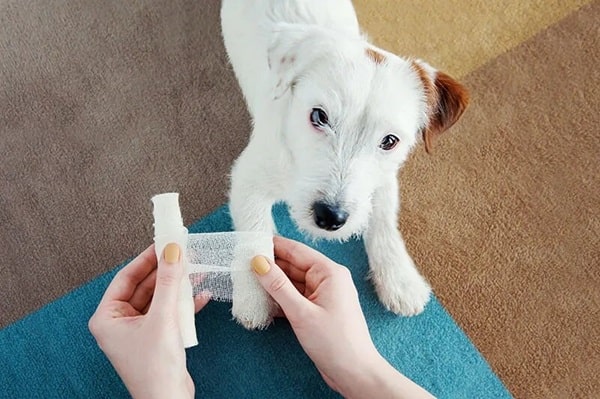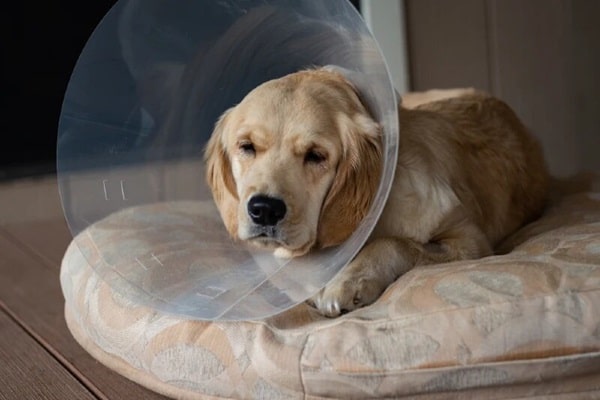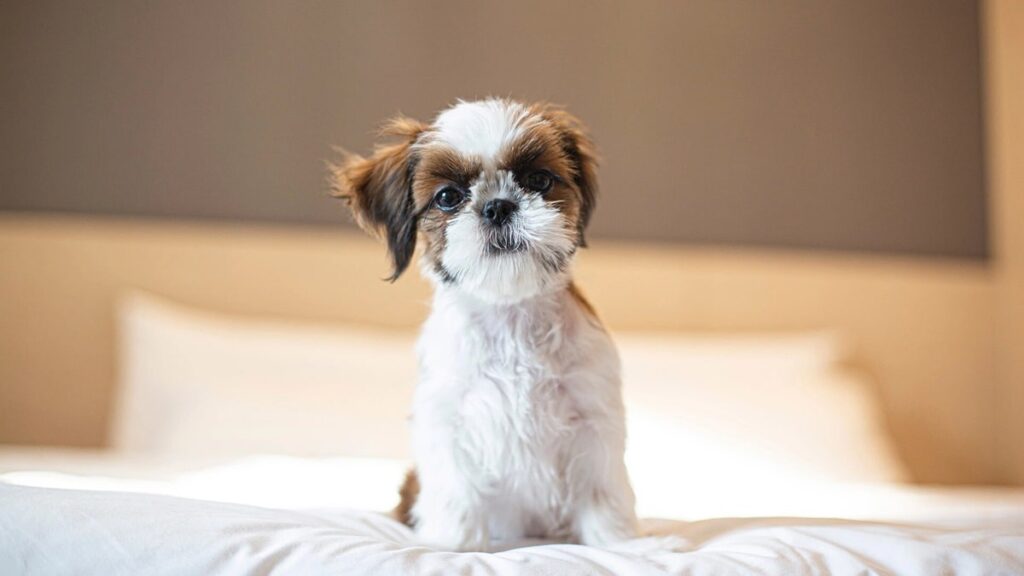An injured paw can bring discomfort to your dog, and depending on the nature of the injury, it may expose them to the risk of infection leading to potential diseases. If the injury surpasses a minor level, seeking prompt veterinary attention is crucial for a thorough assessment. Common situations that may necessitate wrapping a dog’s paw include a torn toenail, scraped paw pad, or a small wound.
Properly wrapping your dog’s paw serves to shield the injured area and alleviate pain until the minor injury heals or professional assistance is obtained. If you opt to wrap your dog’s paw, it’s essential to master the correct technique. Below are expert tips that will guide you in efficiently and effectively executing the process.
Essential Supplies for Bandaging Your Dog’s Paw
Before initiating the paw-wrapping process for your dog following an injury, it’s crucial to gather several items. Keeping these supplies in a portable medical kit that is easily accessible can prove beneficial in emergency situations.
The necessary items include:
- Scissors
- Square gauze pads, non-stick wound pads
- Rolled gauze
- Adhesive bandages like vet wrap
- Bandage tape
- A clean cloth or paper towel
- Antiseptic, such as hibiscrub (chlorhexidine)
The 9 Guidelines for Bandaging Your Dog’s Paw
1. Ensure Wound Cleanliness (If Applicable)
If you’re wrapping your dog’s paw due to an injury resulting in an open wound, prioritize cleaning the wound before wrapping. Check for any foreign objects, such as glass, thorns, or grass seeds, and remove them if easily accessible. For challenging cases, seek veterinary assistance. Use a homemade saline solution (half a teaspoon of salt to one cup of water) or a diluted antiseptic, like hibiscrub (1 part hibiscrub to 10 parts water), for cleaning.
If the wound is bleeding, apply pressure with a clean cloth/towel until it stops. In cases of heavy bleeding or non-stop bleeding after 5-10 minutes, contact your vet immediately.
2. Ensure Paw Dryness
Before attempting to wrap the paw, ensure it is completely dry. A wet paw may cause the wrap to slide off, and moisture can promote bacterial growth, potentially worsening the wound. Allow the paw to air-dry if your dog remains still, or gently blot it with a clean towel or kitchen paper.
3. Utilize a Pet-Safe Antimicrobial Spray if Available
After thorough cleaning and drying of the paw, consider using a pet-safe antiseptic spray if you have it on hand. This can serve as a valuable addition to your first aid kit.
4. Apply a Gauze Square or Non-Adherent Wound Dressing
For open wounds like cuts or scrapes on your dog’s paw, place a square of gauze pad or another non-adherent wound dressing on the affected area.
5. Wrap the Paw Using Gauze Roll

Take the gauze roll and wrap it around your dog’s paw, extending up the leg. Ensure each layer overlaps by approximately 50%. You’ll need a minimum of two layers of gauze roll, and sometimes more, to adequately protect the paw.
6. Complete the Process with Adhesive Bandaging
Once the gauze is secured, finalize the wrapping with a layer of adhesive bandaging material, such as vet wrap, known for sticking to itself. This additional layer helps prevent the gauze from slipping off and exposing the injury. Keep in mind that these bandaging materials are stretchy, and it’s crucial not to wrap them too tightly. Use a gentle stretch, as wrapping too tightly can impede blood circulation to the paw, posing a danger. Always ensure you can insert two fingers between the top of the bandage and the leg to verify it’s not too tight.
If you lack self-adhesive bandaging material, you can secure the end of the bandage with a small piece of bandage tape.
Guidelines for Ensuring the Stability of the Paw Wrap
7. Maintain Cleanliness and Dryness
In damp or muddy conditions, consider placing a plastic bag or dog paw boot over your dog’s wrapped paw when heading outdoors and remove it upon returning inside. Keeping the wrap clean and dry is crucial for its stability and helps prevent infection.
8. Employ a Cone

Cone collars, also known as Elizabethan collars, pet cones, or E collars, are commonly used to prevent dogs from licking stitches and reduce the risk of them tearing off wound dressings. While a dog’s paws are easily accessible, a cone collar may not completely restrict access to the wrap. However, it can minimize potential damage and thereby reduce the likelihood of the wrap falling off.
9. Use Deterrent Spray
Consider spraying your dog’s paw wrap with a pet product designed to deter them, similar to products used on furniture and other items to discourage interference. These products are formulated to have an unpleasant odor for dogs, deterring them from approaching the treated area. A light application of deterrent spray on the paw wrap may discourage your dog from showing interest in the wrapped paw.
Concluding Remarks
While wrapping your dog’s paw can provide protection and aid in the healing process for minor injuries, it is crucial not to apply it too tightly. For issues beyond a very minor nature, it is imperative to promptly schedule an appointment with a veterinarian. If uncertain, always seek your vet’s assessment before attempting any home treatments, including paw wrappings. Additionally, avoid leaving a paw wrap on for more than 24 hours unless it has been applied by your veterinarian.
Frequently Asked Questions
It is recommended that the bandage not be left on the paw for more than 24 hours unless it has been applied by a veterinarian.
Yes, regular bandages can be used, but it is also recommended to use special veterinary materials such as “vet wrap” for improved fixation.
Apply pressure to the bleeding site with a clean towel/rag and, if bleeding does not stop within 5-10 minutes, contact your veterinarian.
Yes, after thoroughly cleaning and drying the paw, a pet-safe antiseptic spray can be used.
Use a cone-shaped collar (Elizabethan collar) to reduce the dog’s ability to lick the bandage, and consider using a deterrent spray, which creates an unpleasant odor for the dog and can distract him from his interest in the bandage.
Наш аналіз 2025 року — щасливі тварини, щасливі люди.
⚠️ We suggest that you read all the opinions on our portal and take note of them at your own discretion. Do not self-medicate! In our articles we collect the latest scientific data and opinions of authoritative experts in the field of health care. But remember: only a doctor can diagnose and treat.
The portal is intended for users over 13 years old. Some materials may not be suitable for children under the age of 16. We do not collect personal data from children under 13 without parental consent.We have a small request. We strive to create quality content about pet care, and we make it available for free to everyone because we believe everyone deserves accurate and useful information.
Advertising revenue only covers a small portion of our costs, and we want to continue to provide content without having to increase advertising. If you have found our content useful, please support us. It only takes a minute, but your support will help us reduce our reliance on advertising and create even more useful articles. Thank you!


